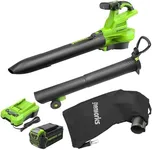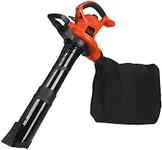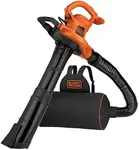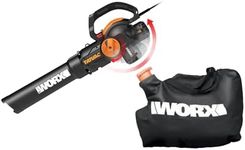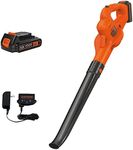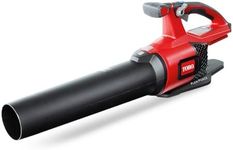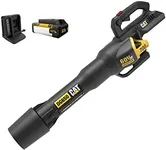Buying Guide for the Best Outdoor Leaf Vacuum
Choosing the right outdoor leaf vacuum can make yard maintenance much easier and more efficient. When selecting a leaf vacuum, it's important to consider various specifications to ensure it meets your needs. Understanding these key specs will help you make an informed decision and find the best fit for your yard work.Power SourceThe power source of a leaf vacuum determines how it operates and its overall convenience. Leaf vacuums can be powered by electricity (corded or cordless) or gas. Electric models are generally quieter and require less maintenance, with corded versions offering unlimited runtime but limited mobility, while cordless models provide more freedom but limited battery life. Gas-powered vacuums are more powerful and suitable for larger areas but are noisier and require more maintenance. Choose based on the size of your yard and your preference for mobility and maintenance.
Airflow and Suction PowerAirflow and suction power are critical for the performance of a leaf vacuum. Measured in cubic feet per minute (CFM) and miles per hour (MPH), these specs indicate how much air the vacuum can move and how fast. Higher CFM and MPH values mean better performance in picking up leaves and debris. For small yards with light leaf coverage, lower values may suffice, while larger yards with heavy leaf fall will benefit from higher values. Assess the typical leaf volume in your yard to determine the necessary power.
Mulching RatioThe mulching ratio indicates how effectively a leaf vacuum can reduce the volume of collected leaves. A higher mulching ratio means the vacuum can compress leaves into smaller pieces, making disposal easier and reducing the number of bags needed. Ratios like 10:1 or 16:1 are common, meaning the vacuum can reduce 10 or 16 bags of leaves into one. If you have a lot of leaves to manage, a higher mulching ratio will be beneficial.
Bag CapacityBag capacity refers to the volume of leaves and debris the vacuum can hold before needing to be emptied. Larger capacities mean fewer trips to empty the bag, which is convenient for larger yards. However, larger bags can also be heavier and more cumbersome to handle. Consider the size of your yard and your physical ability to manage the bag when full. Smaller yards may not require a large capacity, while larger yards will benefit from a bigger bag.
Weight and ErgonomicsThe weight and ergonomics of a leaf vacuum affect how comfortable it is to use. Lighter models are easier to maneuver and less tiring, especially for extended use. Ergonomic features like padded handles, adjustable straps, and balanced designs can also enhance comfort. If you have a large yard or plan to use the vacuum for long periods, prioritize models that are lightweight and ergonomically designed to reduce strain.
Noise LevelNoise level is an important consideration, especially if you live in a neighborhood with noise restrictions or if you prefer a quieter operation. Electric models are generally quieter than gas-powered ones. Noise levels are measured in decibels (dB), with lower values indicating quieter operation. If noise is a concern, look for models with lower dB ratings. Consider your tolerance for noise and any local regulations when choosing a leaf vacuum.



